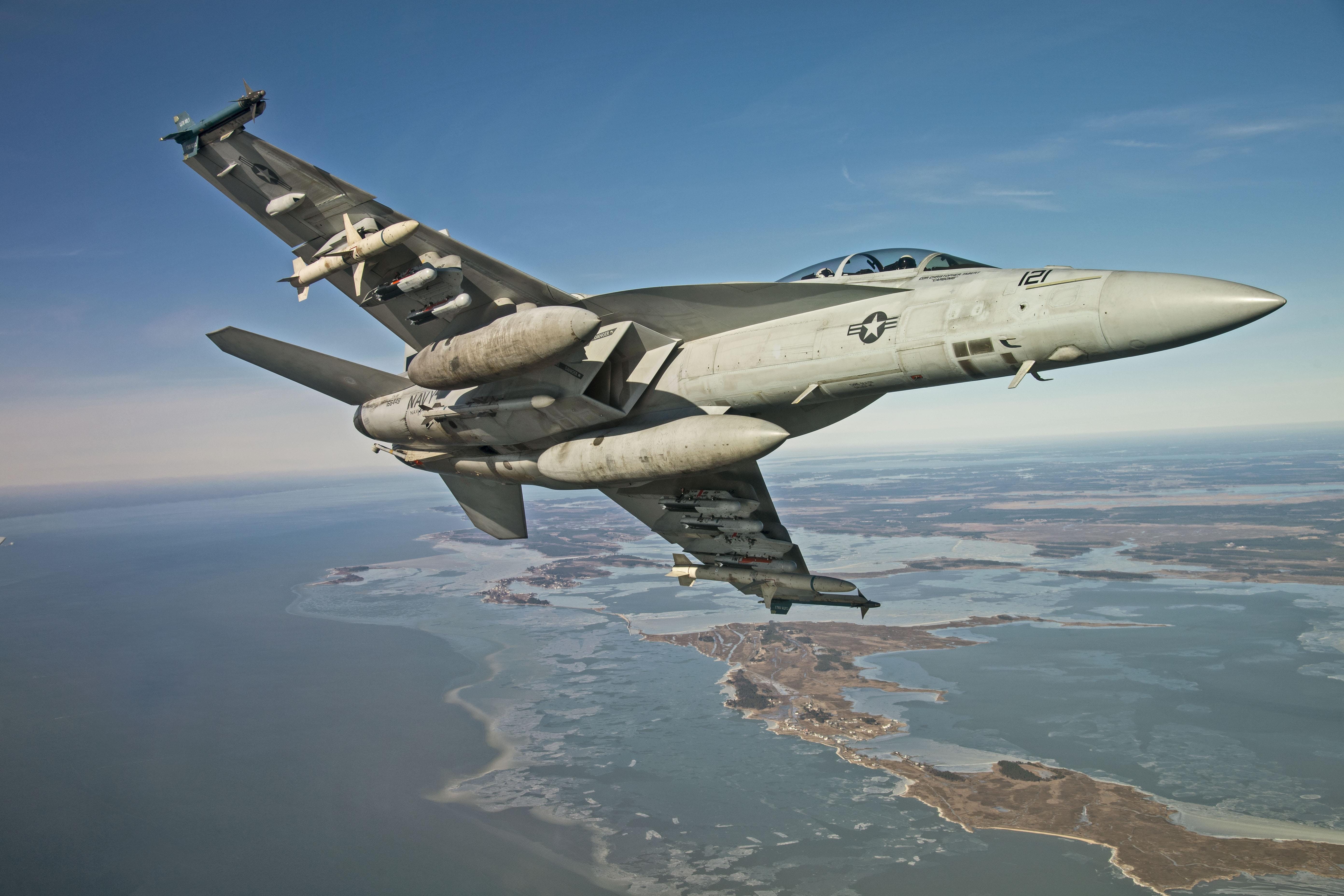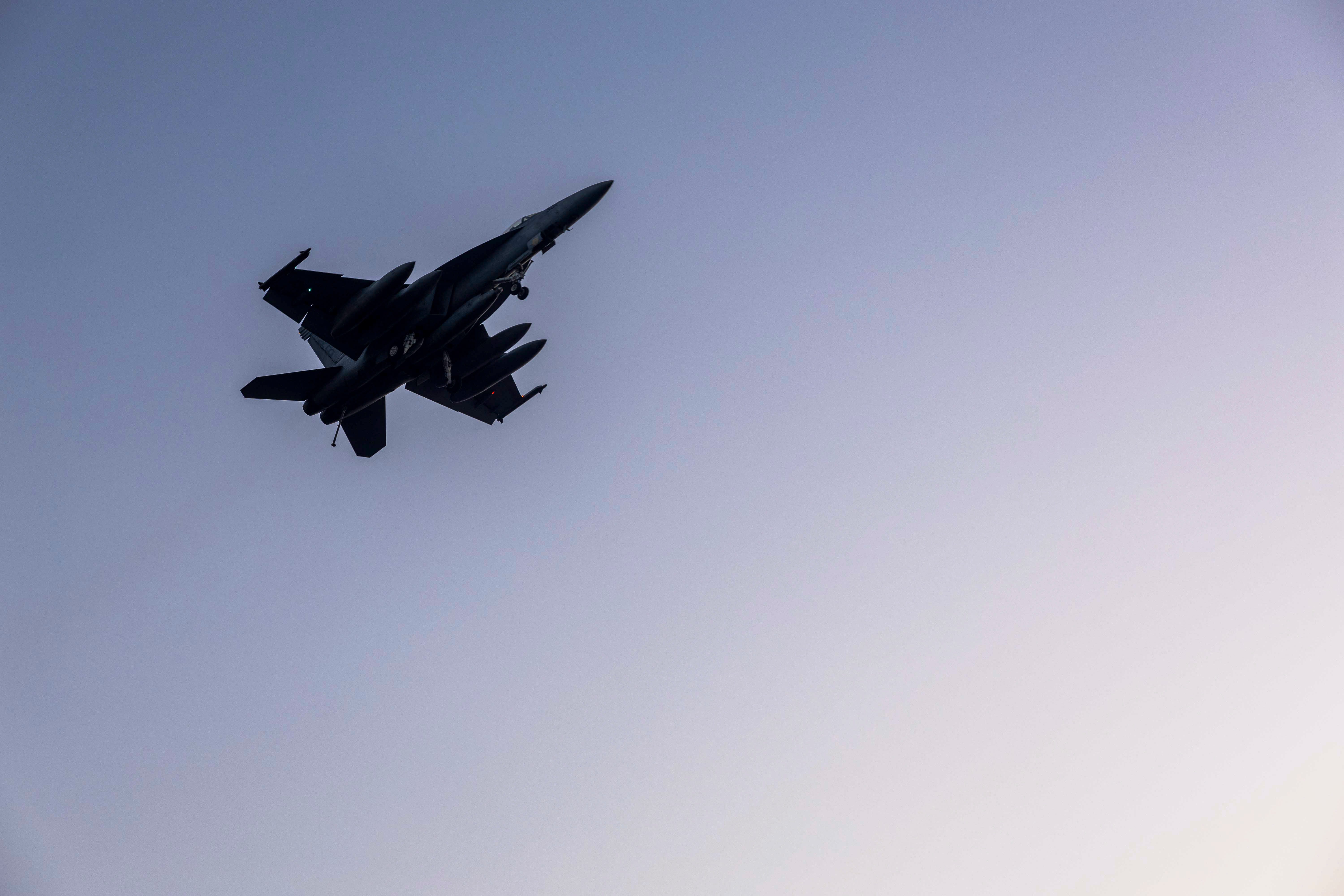
US Navy photo
US fighter jets appear to be using advanced “StormBreaker” precision glide bombs in combat against the Houthis, part of the intense bombing campaign against the Iran-backed rebels.
An image of what looked like an unexploded, US-made bomb half-buried in the sand began circulating on social media Thursday. Open-source intelligence accounts geolocated the image to Yemen’s southern Shabwah governorate.
Trevor Ball, a former US Army explosive ordnance disposal technician, identified the munition as the GBU-53/B StormBreaker, a relatively new munition in the American arsenal. He told Business Insider that the discovery of the bomb, seemingly fully intact, highlights a problem: it could fall into the wrong hands.
The GBU-53/B, known as the Small Diameter Bomb Increment II, is an air-launched standoff weapon with precision guidance and pop-out wings. The 200-pound bomb is made by US defense contractor Raytheon, now RTX, and can be released from carrier-based fighter aircraft like the F/A-18E/F Super Hornet.
The weapon can be used against moving and stationary targets and is capable of operating in inclement weather, according to Naval Air Systems Command. The bomb can also receive updated target coordinates mid-flight.
In October 2023, the Navy declared early operational capability for the StormBreaker and said its Super Hornets would be the first platforms to carry the bomb.
US Central Command, which oversees Middle East operations, published footage last month appearing to show the StormBreaker among other ordnance aboard the aircraft carrier USS Harry S. Truman, which has been at the forefront of the Houthi conflict.

US Central Command
The War Zone, which first reported on Friday on the StormBreaker’s discovery in Yemen, spotted evidence last month that the Navy had used the munition for the first time in combat.
The image of the apparent StormBreaker looks to be the clearest sign that the US is using this weapon against the Houthis. That the munition is fully intact suggests air defenses did not take it out. A defense official declined to answer BI’s questions about the incident or provide further details.
Ball, a researcher at Armament Research Services, said the risk in this situation is that Iran, which has long supported the Houthis, could get its hands on the StormBreaker.
“The Iranians are notorious for reverse engineering weapons systems and creating their own versions,” Ball said. “The quicker Iran can acquire weapons to exploit relative to the US fielding them, the more Iran can try to narrow gaps in their capabilities.”
This could even go on to benefit Russia, which has enjoyed increasingly close defense ties with Iran since Moscow launched its full-scale invasion of Ukraine in February 2022.

US Navy photo
Ball explained that although the StormBreaker was reportedly found in an area of Yemen that the Houthis don’t control, “it highlights the risk of unexploded munitions ending up in Iranian possession,” especially given that there are likely highly classified components in the munition.
“The greater the scale of airstrikes and use, the more likely this becomes,” Ball said, adding that the same risk applies to the AGM-158, which the US has been using against the Houthis.
The AGM-158, or Joint Air-to-Surface Standoff Missile (JASSM), is a stealthy, long-range cruise missile developed by Lockheed Martin. The JASSM and StormBreaker are standoff weapons, meaning that aircraft can release them from a distance and avoid Houthi air defenses, unlike conventional gravity bombs dropped directly over a target.
The US also appears to be using the AGM-154 Joint Standoff Weapon (JSOW), among other advanced munitions, against the Houthis.
The US has been bombing the Houthis for six weeks straight to get the rebels to stop their attacks on Red Sea shipping. The military has publicly disclosed very few details about the intense campaign since the early days, though it acknowledged striking a major Houthi-controlled oil terminal last week. Dozens of people were reportedly killed in the attack.
Defense Secretary Pete Hegseth said Thursday that the US has attacked hundreds of Houthi targets since the campaign began and decimated its leadership. However, analysts have cast doubt that the strikes will effectively eliminate the rebels’ capabilities; previous stikres haven’t. Just a few days ago, for instance, they fired missiles at Israel.
The post It looks like a StormBreaker may have landed intact in Yemen, raising the risk the US bomb could fall into the wrong hands appeared first on Business Insider.




